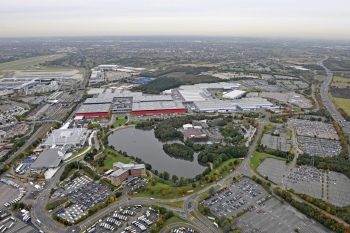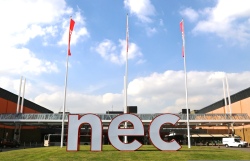Tackling energy use at the NEC

Managing energy at the National Exhibition Centre (NEC) is a challenge as the use of the space changes from day-to-day. Sean Prior, energy manager for CBRE, dedicated to the NEC Group account, explains why and what fixes, some quick and others not so, can be deployed for these types of buildings
The National Exhibition Centre (NEC) is a huge complex providing over 182 000 m2 of covered indoor space across 20 interconnecting halls and 34 conference suites. By its very nature, the usage varies every day, as do the energy requirements. Large consumer exhibitions or big-brand experiential events can have high energy needs for complex lighting and sound, whereas trade exhibitions or company AGMs may have more modest energy requirements.
There is no point in targeting the hall and conference users as they are just here for the day or the week. Instead, my focus is on the back-end and energy usage when the venues are not in use. To give some context, 35 years’ ago, the annual energy bill at the NEC was around £1 million; today, it’s around £4.5 million.
Before any energy-saving initiatives could be considered, however, it was crucial to be able to accurately measure and understand current consumption — where and when it was being consumed.
Instead of capturing some data from various venues and halls on a monthly basis, we installed 850 smart meters across the NEC, each updating every half an hour. When analysed, the 1.2 million readings per month produced usage profiles for different parts of the estate, enabling us to create usage profiles and pre-determined baselines which, when exceeded, issued an alert enabling us to investigate.
These profiles also helped us with planning. In the past, we might have spent thousands of pounds in areas where we were making little difference. In contrast, now we are measuring the profile for every hall, we know where we could make a significant impact and look to improve our existing technology, or even install new technology.
However, there were steps that could be taken first which are not capital intensive and relatively simple. It is easy to get bogged down with the scientific complexities, but cost-saving activities are, in many cases, dependent on attitudinal change of the people involved.
 |
| The covered indoor space at the NEC includes 20 interconnecting halls and 34 conference suites. |
Communications
CBRE’s team has embarked on a communications programme to make staff more aware of the impact they can have. This included simple methods for reporting faults, such as running taps, via a dedicated telephone helpline or through Twitter, and a poster campaign for staff focusing on the basics such as turning off lights, taps and computer monitors.
Admittedly, it’s harder for staff to make an impact when results are less obvious, but this is where the smart meters came into their own. They make us far more aware of the energy we are using, in real time, so we can take immediate steps to reduce waste.
Education has played a big part, not just for staff but across the whole CBRE building services and facilities-management team. We created ‘energy champions’, a role that was devised by Norland before it was acquired by CBRE and which is now a key constituent across the entire business. It has worked well and proven its worth. Norland has won several awards for its staff energy-awareness training including the CIBSE Training for Building Performance Award.
Energy champions have been given full training in identifying and reporting problems and issues, and engaging with staff, helping to direct the business on energy-conservation initiatives going forward. One energy champion noticed that our Block B capacitors were failing, resulting in a massing increase in energy consumption. We only realised how significant it was when the smart meters were installed. Now new capacitors have gone in, we’re making significant savings.
 |
There have been other changes which have had significant impact, such as changing the heating in the large halls to gas-powered radiant heaters. Another change is bringing street lighting more into line with municipal practice; NEC lights were much brighter and coming on much earlier than standard practice, and staying on much later.
The smart meters are expected to lead to savings of 1.5% of energy expenditure in the first year, 3% in 2015/16 and 5% in 2016/18. To date, we have saved some 3.2 GWh.
This is just the start. The smart-meters project team will be engaging with the business to look at how we can get the best out of the system. As part of this, a new energy dashboard — a real-time reporting tool — will be launched which will illustrate overall site usage, giving our energy champions an even more detailed view of local consumption.
Sean Prior is energy manager with CBRE, commercial property and real estate services adviser, and is dedicated to the NEC Group account.







